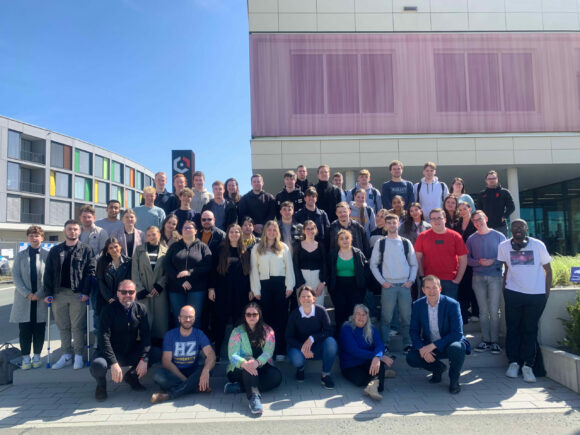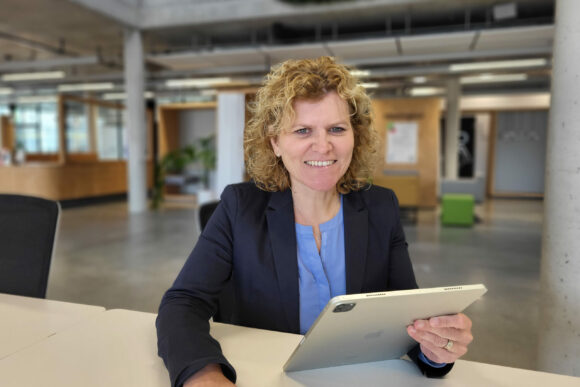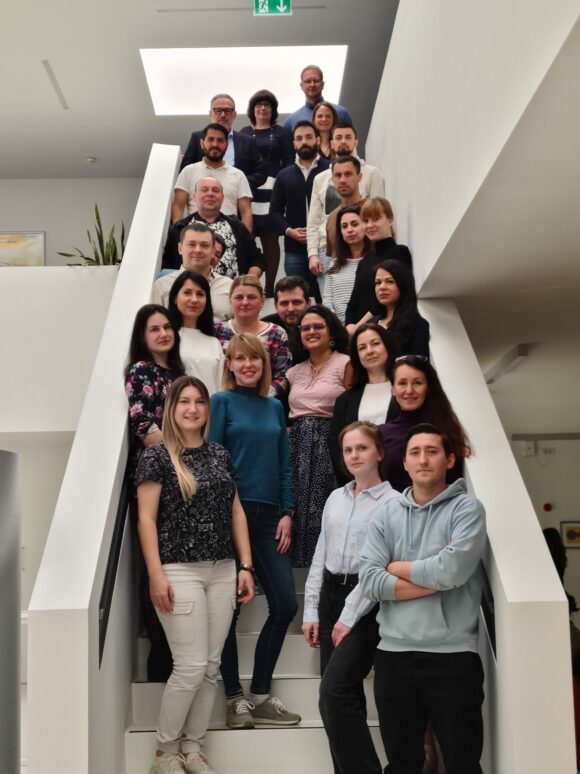With the start of the winter semester 2021/22, Prof. Norbert Diedrich, an expert in interactive media and communication design, will join Hof University of Applied Sciences. After working in New York, among other places, the 46-year-old graduate designer founded the agency bueroparallel GmbH in Würzburg in 2005, of which he is the managing director. The office has won numerous national and international awards, including the Red Dot Communication Design Award, the IF-Design Award and the Annual Multimedia Gold. It has specialized in interface design, user experience design, strategic communication, realization and implementation in the field of software and web development since 2011. Prof. Diedrich has worked with numerous well-known companies and brands in this context, including Ben & Jerry, Men’s Health, Sony Ericsson, Würth, the IHK and various medium-sized companies and institutions in southern Germany.

He takes over the teaching area “Conception and Design of Digital Narratives” at the Faculty of Interdisciplinary and Innovative Sciences. We talked to him about this exciting field.
Prof. Diedrich, how exactly is your future task defined?
In the broadest sense, my task involves teaching digital narratives in the field of the Internet: on the one hand, this can be the vivid and comprehensible communication of complex information in the editorial field of cultural, institutional and industrial contexts. On the other hand, storytelling is used, for example, for brand strategic alignments of companies in order to position themselves
Storytelling is essential: no brand today can do without good stories!
Prof. Norbert Diedrich
My own background is in web development, strategic consulting and user experience design – the design of an optimal user experience in the context of the human-machine interface. This has to do, among other things, with fun to use and with handling digital processes as clearly and simply as possible. Behind this is usually good system architecture and complex design systems that are interacted with via a user interface. This will also be part of my tasks.
Since 2017, you have been teaching in the field of interactive media at the University of Applied Sciences in Würzburg. But your practical background is also more than distinctive in relation to your teaching topic…
As managing partner of bueroparallel GmbH in Würzburg, I provided strategic advice to our clients within digitization. I was also responsible for the creative direction of the web-based applications and brand positioning, which is now strongly digitally driven. At the same time, I held various responsibilities within the management of a digital agency, such as training, personnel development, acquisition and orientation of the agency
You are now switching completely to teaching. What tipped the scales for this?
After working at the agency for 16 years, it is very interesting for me to switch to a university. It allows me to work more forward-looking within teaching with students and research. The projects are freer and not so stuck in the status quo – and you can take on more meaningful topics and hopefully give the students and the industry the right impetus. In Germany, there is a lack of young talent to be able to drive digitization forward in a sensible way. So it makes sense to train young people and it’s just fun to pass on the experience and methods you’ve gained.
What current trends do you see in this area?
One specific trend topic for the near future will definitely be the topic of accessibility. In the future, this will be demanded more strongly by the legislator, especially with regard to institutions. Designers have often treated this stepmotherly and that will change, also for IT – at the latest when the legislator will check more strongly.
The concept of headless architecture in the area of CMS and store systems is also becoming more present: This is about the systemic decoupling between the user interface and the downstream process logic of the backend. Both parts communicate with each other via an interface. The aim is to map data and functionality from different sources as efficiently and uniformly as possible for as many application requirements as possible, such as apps for smartphones and smartwatches as well as websites or digital pillars. The task is to create flexible frontends that are output as natively as possible on different end devices.
Here, the designer is the focus of the development of the design system and the usability of the various end devices. He must be able to act in an advisory capacity for all those involved within such a project – he therefore also needs an understanding of the technology and its application scenarios.
Prof. Norbert Diedrich
Does the megatopic of artificial intelligence also play a role here?
Of course. The question is: How will the design process be changed by AI-based tools? This is already having an impact on many areas, e.g. image processing, film and photography. But intelligent, automated design grids will also be a topic in the future – simple design systems will be eliminated for us designers, and more complex and cross-disciplinary issues will be added
The important questions for designers are: Where and how do we want to and will we work in the future? What are the really socially relevant issues? How does technology influence our work? The union of sustainability and high-tech is certainly a highly topical issue and will remain so in the future: Here, it would be desirable if designers were more intensively involved in concrete product developments and approaches to solutions – the stronger merging of research, engineering and design will continue.
Why did you choose Hof University of Applied Sciences?
Hof University of Applied Sciences has developed very well in the field of media and communication design, and my colleagues do a great job. I think I fit in well with the team in terms of my skills and abilities and can complement them in a meaningful way. I also find myself in the university’s mission statement. In addition, the proximity to my hometown of Würzburg makes it easy to combine work and family life.
These are, of course, good prerequisites. What are you looking forward to and where do you see the greatest challenges in your future work?
I am particularly looking forward to working with the students and my new colleagues. I see the greatest challenge as being able to optimally convey the complexity and variety of topics of our profession within the 7 semesters of a bachelor’s degree program. But I am confident that together we will succeed.







